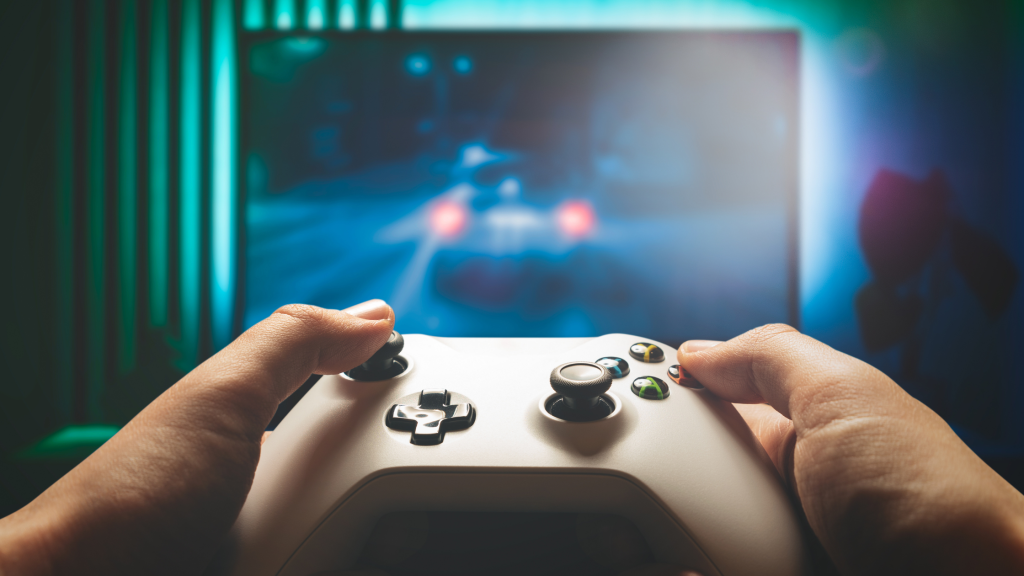Are you looking to upgrade to a new TV or find one that meets your specific needs? In this blog, we’ll provide a straightforward TV buying guide, highlighting the key specs to consider when asking yourself, ‘What TV should I buy?’ So, follow along!

Choosing The Best Refresh Rates
Let’s kick off our TV buying guide by talking about refresh rates and what’s best for you. A refresh rate, put simply, is how many times the image updates within a second on your screen. The higher the refresh rate, the smoother your image will be, like watching a ball move clearly across the screen rather than skip around. A TV’s refresh rate is measured in Hertz (Hz). The more common refresh rates found in TVs include 60Hz and 120Hz. Most standard TVs will have a 60Hz, however, if you want to see an improvement in motion and a reduce in blur, you might want to go for a TV with 120Hz. In fact, the best TVs for watching sports, or for gaming should ideally have a 120Hz or even more!

Understanding High Dynamic Range
High dynamic range, or HDR, makes the picture on your TV look more realistic and vibrant by showing more detail in both bright and dark scenes.
The basic HDR standard is HDR10, which is common and works with most TVs. It uses the same HDR settings for the entire video.
For a better experience, consider HDR10+, which adjusts the HDR settings for each scene, giving you an even better picture. The best HDR option is Dolby Vision. It’s the most advanced, using scene-by-scene adjustments like HDR10+ but with extra features for the highest quality picture.

TV Buying Based on Size
This one’s pretty important in this TV buying guide. Before you purchase a new TV, you should consider the space in which it will go. For example, if you have a smaller space or seating area, you probably wouldn’t want to go for a 75 inch TV! Samsung suggests that “the best and most immersive viewing experience is when 40 degrees of your field of view is taken up by the screen.” You can easily calculate the ideal viewing distance based on the size of your TV. Simply multiply the screen size by 1.2 to determine how many inches your couch should be from your TV. For example, if you’re looking to buy a 75-inch TV, your seating should be at least about 90 inches, or 2.3 meters, away. Easy as that!

The Ideal Screen Resolution
A resolution is how many pixels are present in a display or entire screen. Put simply, the more pixels a TV has, the crisper the image will be!
However, more pixels aren’t always better, and sometimes it’s not worth the extra cost. For smaller TVs, having the highest number of pixels doesn’t offer much benefit because the pixels are so compact that you won’t notice a significant difference. However, for larger TVs, more pixels can make a noticeable difference in picture quality. When browsing for TVs based on their resolution please note that if a TV’s resolution reads Full HD, this is just another term for 1080p!

Best TVs For Gaming
If you plan on doing a lot of gaming on your TV, you’ll want to consider several factors that don’t come into play with regular content watching. So, to get the best gaming experience, here’s what to look out for!
First up, you’ll want to aim for a TV with a refresh rate of at least 120 Hz, and up to 240 Hz. The best choice depends on the type of games you play. A 240 Hz would be ideal for fast-paced games, providing a smoother and more responsive experience.
Secondly, ensure that your TV has an input lag under 15 milliseconds. While most TVs offer an input lag of around 15 milliseconds, aiming for a lower input lag will provide more responsive gameplay. This is especially important for competitive and professional gamers who need every millisecond advantage.
Thirdly, check that your new TV has an HDMI 2.1 port for a high bandwidth connection that supports advanced gaming features. Some of the advanced gaming features you might want to opt for include, Variable Refresh Rate (VRR) and Auto-Low Latency Mode (ALLM) for an optimised gaming experience.

Content Preferences and Smart TVs
Finally, our last bit of advice for our TV buying guide is that you should consider what content you watch the most frequently. These days, there’s not really any non-smart TV options, however depending on how much you spend, Smart TVs will offer different ranges of apps and services.
So, if you find you don’t use streaming apps all that much, and you don’t think you will find value in a higher end Smart TV with a larger range of apps and services, then consider going for a cheaper entry Smart TV instead.
Are you interested in using social media on your Smart TV? Do you want to download games or use voice command capabilities? How about sending content from your phone to your TV? These are all important considerations to think about before purchasing your new TV. Knowing exactly what features you need will help you find the perfect TV that meets all your needs.
Now that you know what to look for when buying a TV, make a list of the features you need based on our TV buying guide to ensure you get the perfect option for you! If you need help setting up your new Smart TV, choosing the right one, or even mounting it on the wall, book a Geek today! We’re always here to help!